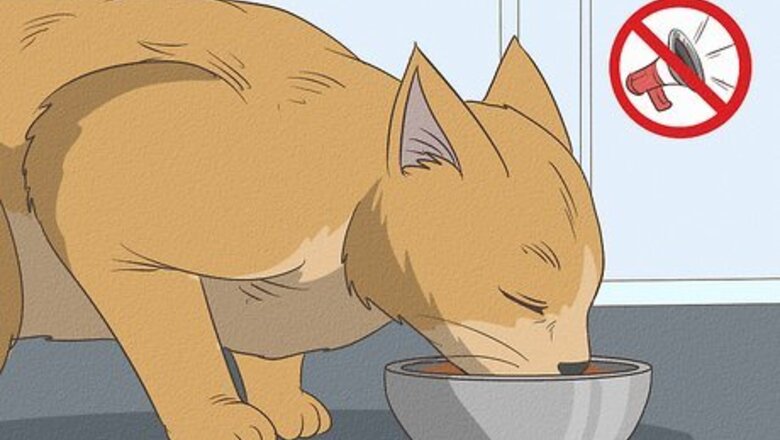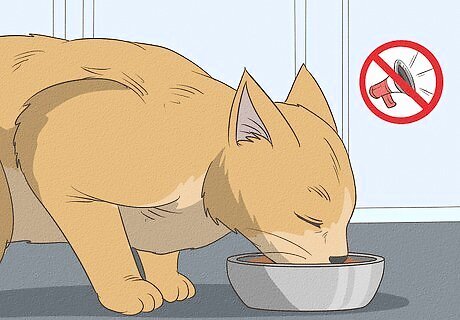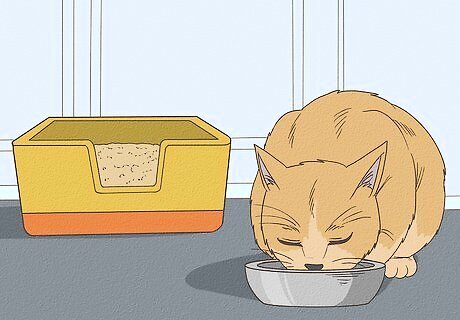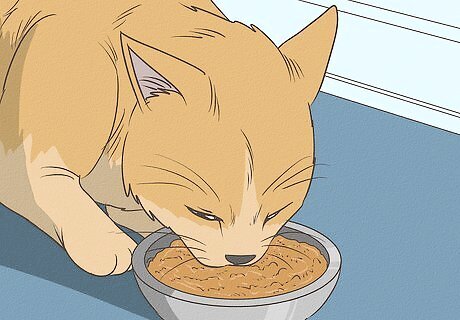
views
Selecting the Ideal Feeding Location

Choose a calm, quiet feeding location. Cats wants to feel comfortable where they eat. If your cat’s food bowl is in a busy area of your home where there’s a lot of noise and foot traffic, your cat may not feel comfortable enough to eat her food. Select an area of your home that’s quiet and calm. This area could be an unused bedroom, the living room, or maybe a quiet hallway. Try to make this quiet location fairly close to where your cat usually spends its time.

Feed your cat away from the litter box. In the wild, cats eliminate away from their nests. Pet cats will not eat where they eliminate, and vice versa. If you put your cat’s food bowl next to the litter box, your cat won't know what to do—should it eat or go to the bathroom? Your cat may decide not to use the litter box, which could be problematic for you. To prevent confusion, put the food bowl in a completely separate area from the litter box. If your cat already has a litter box problem, moving the food bowl away from the litter box could help resolve the inappropriate elimination.

Select a feeding location away from the water bowl. It seems logical to put your cat’s water and food bowls in the same place. However, in the wild, cats search for food and water separately. Setting the food and water bowls next to each other could prevent your cat from drinking enough water. Wherever you feed your cat, set the water bowl in a different area. If you have a double bowl (food and water bowls together), purchase separate bowls. Cats typically don’t like double bowls because the water can get contaminated with bits of food at mealtime.

Do not change feeding areas. Cats are creatures of habit and can become stressed if their environment or daily routine suddenly change. Once you have identified the perfect feeding area, do not switch locations. Only move the food bowl in certain situations, such as if your cat is old or injured and has difficulty walking to the food bowl. If your cat is overweight, consider moving the food bowl to a more distant location in your home. This would encourage your cat to get more physical activity.
Feeding Your Cat in a Multi-Pet Household

Feed your cat and dog separately. Dogs and cats have different nutritional needs. If you have a dog, create separate feeding areas to prevent your cat and dog from eating each others food. Also, your cat may not feel safe eating right next to your dog. As a result, your cat may eat as quickly as possible to get away from your dog, which could lead to digestive upset. If your cat feels unsafe next to your dog in the eating area, your cat may not eat at all. You do not have to feed your dog and cat at separate times. You can feed them at the same time, as long as their feeding areas are separate. If your dog eats only a little of your cat’s food, it may develop diarrhea. If it regularly eats your cat’s food, though, it could become very sick.

Create feeding stations. If you have multiple cats, meal time could be an issue, especially if one cat is bullying the other cats. To make sure each cat gets their share of the food, create feeding stations in different parts of your home. That way, each cat can have its own safe space to eat without having to bully or get bullied.

Use creativity when positioning the feeding stations. Feeding stations don’t have to be on the floor. For example, if you have a cat condo, put a feeding station on a flat surface of the condo. This location could work for a cat that is very shy or gets bullied by other cats or pets. The cat condo feeding station would also be out of reach of dogs and little children. Depending on where your cats spend most of their time, other potential feeding station locations are the: Office desk Window perch Bathroom counter




















Comments
0 comment